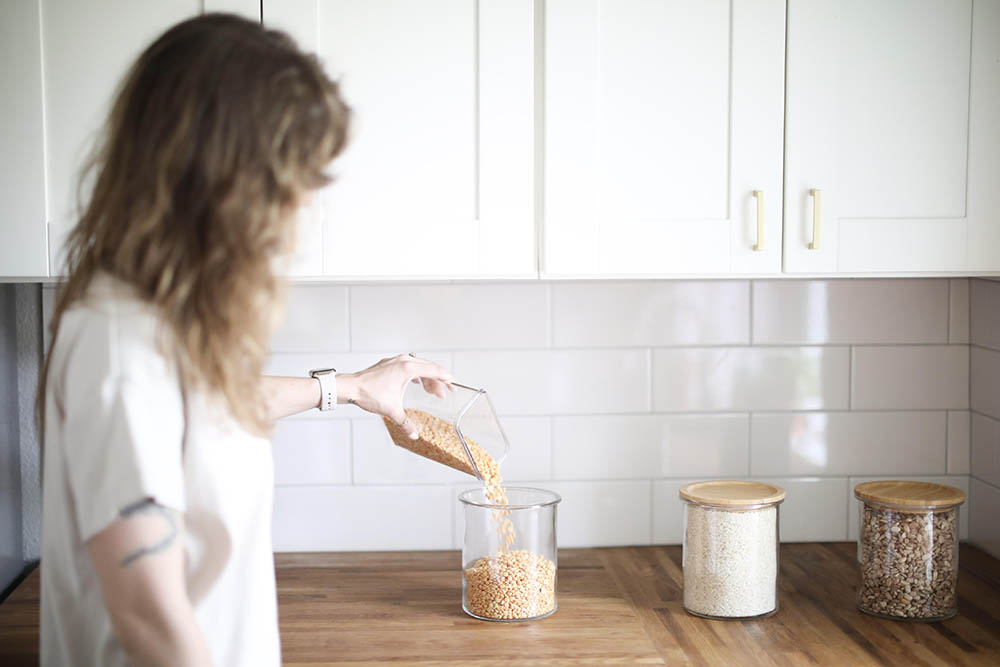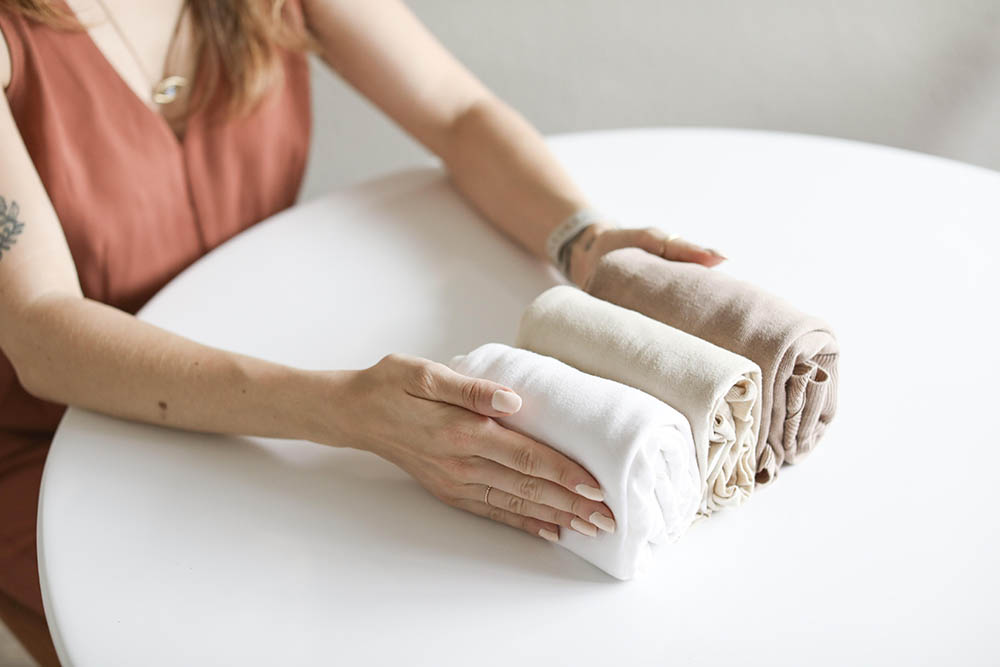Have you wondered about konmari and sustainability? Today we have a guest post those of you cleaning in quarantine will find extra helpful. Certified konmari consultant Devin of The Modern Minimalist, shares not only how konmari helps you create a minimalist home, but a sustainable one.

Create a gratitude ritual
The spark joy concept Marie Kondo is famous for starts with honing in on your awareness of the feeling in your body when you experience joy. We go through decluttering belongings in the five categories: clothes, books, papers, komono (miscellany) and sentimental. Along the way, you learn gratitude for the items you have.
Learning the signature konmari folding method is a tactile way to show your clothing gratitude by taking the time to fold each item in a thoughtful manner.
As you learn to focus in on the items that bring you joy, and as your belongings become more minimal, you become more interested in keeping them in good condition. Living a more minimal lifestyle allowed me to learn how to mend my jeans, remove stains, and learn all kinds of DIY repairs around my home, because when your surroundings spark joy, you are committed to taking care of them.
Another aspect of the emphasis on gratitude, is the home greeting. The konmari method talks about greeting your home every time you enter it, whether this is by talking to it, or simply offering a phrase of gratitude for everything it allows you to do. Right about now, your home is offering you more than ever as a space for co working, to rest, workout, a bar, restaurant, zoom with friends, its everything!
Creating a gratitude mindset is a small shift that can change your life. I encourage you to try it out!

Use what you have
After the decluttering process is complete, we talk about storage. One of my favorite aspects of the method, this allows us to get creative, and be resourceful to find solutions using what we already have. Much like the DIY mask videos going around, there are so many multi functional items already in our homes that we can use to store + organize items.

• first, look at the built in storage your home has. Built in shelving, cabinets, hooks etc. are the first place we want to look
• shoe boxes + apple boxes for storage containers for clothes, electronics, accessories, office supplies
glass jars upcycled for bulk kitchen storage, flower vases
• store purses inside of each other
• store hats stacked or on the wall
• kitchen pots/pans/baking sheets/tupperware can all be stored inside each other
• become more conscious about future purchases
Once you’ve created a gratitude ritual, minimized, found homes for your items, it’s time to get intentional about anything new that will enter the home in the future. For me, this meant a lot less spending on products that aren’t sustainably made, researching company values and ethics in everything from beauty to cleaning supplies, following sustainable influencers, increased focus on supporting local businesses, second hand and vintage businesses, and farmers markets. Being a conscious consumer theres a lot of ground to cover, and the information out there is ever evolving so don’t be too hard on yourself. I just incorporated a bidet + untoilet paper to address the toilet paper crisis last week and I’m still getting used to it. I’m a firm believer that we’re all works in progress so try to be less judgmental of where others are at in their sustainable journeys.

I hope these tips are helpful to you! If you’d like to start your own konmari journey, you can download my free checklist, find more sustainable tips + schedule a virtual session on my website: themodernminimalist.biz
For a konmari folding tutorial, check out my YouTube.
with gratitude,
Devin
The modern minimalist
your two cents